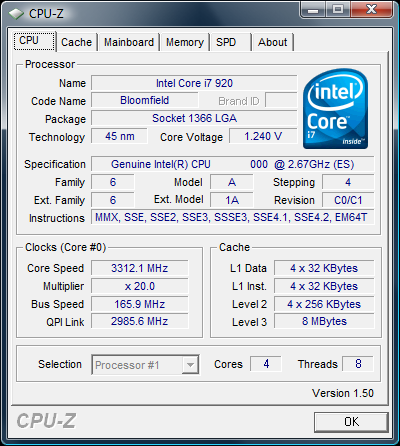Overclocking Core i7: Power Versus Performance
From 2.66 To 4.0 GHz
Core i7 920 Default Clock Speed: 2.66 GHz
When idle, the Core i7 will reduce its clock speed to 1,600 MHz if SpeedStep is enabled. This equals the 133 MHz base clock times 12.
At peak, the maximum clock speed switches to 2.66 GHz.
If a single thread creates a 100% CPU load, the CPU can increase the multiplier from the x20 default (2.66 GHz) to x21, which results in an effective 2.8 GHz clock speed.
If the CPU load stays at 100% for only one core, while the operating system dispatcher has little work to do for the remaining cores, the Core i7 can increase the core clock speed to 2.93 GHz by incrementing the multiplier from x21 to x22. Keep in mind that Turbo Mode applies only to one core.
Core i7 920 at 3.33, 3.66, 3.8 and 4.0 GHz
At 3.33 GHz we could still work with the default voltage of 1.25 V.
Get Tom's Hardware's best news and in-depth reviews, straight to your inbox.
The Turbo Mode pushed one core from 3.33 to 3.48 GHz.
A speed of 3.66 GHz required a slightly increased core voltage of 1.275 V.
At 3.8 GHz, we needed to increase the CPU core voltage to 1.345 V for stable operation.
Reaching 4.0 GHz core clock speed required a massive core voltage increase to 1.50 V.
SpeedStep still works even at a 4.0 GHz core speed and 200 MHz base clock, reducing the clock speed to 2.4 GHz (multiplier 12x) when idle. However, Turbo Mode doesn’t work reliably at more than 3.33 GHz anymore, for voltage/stability reasons.









